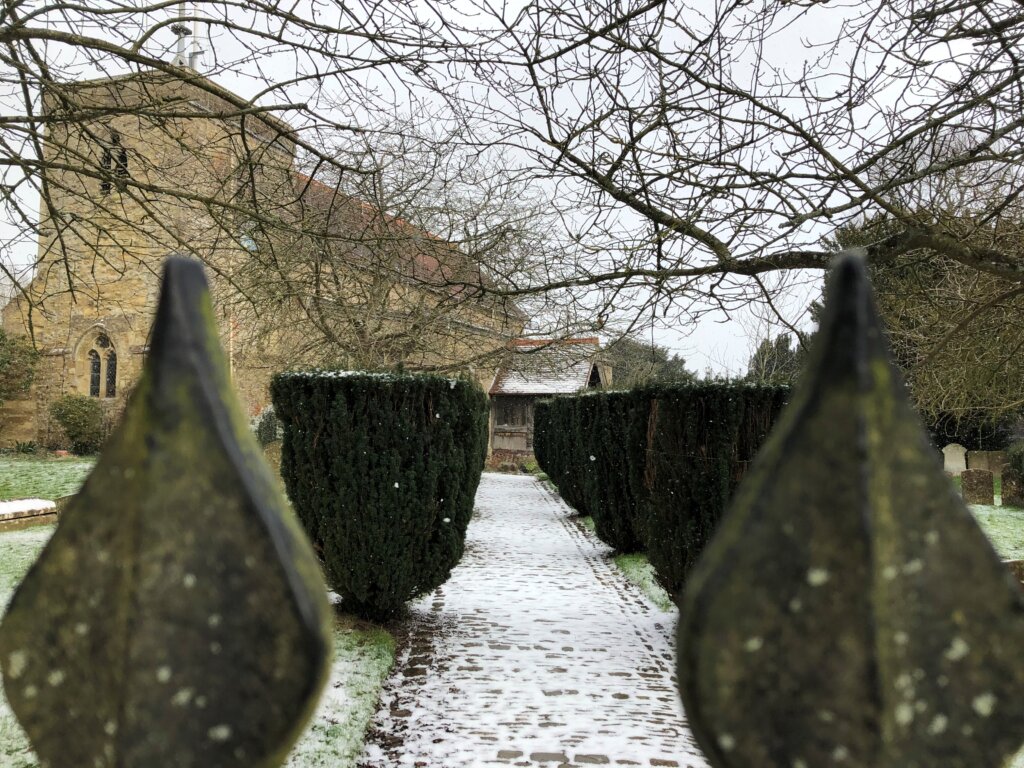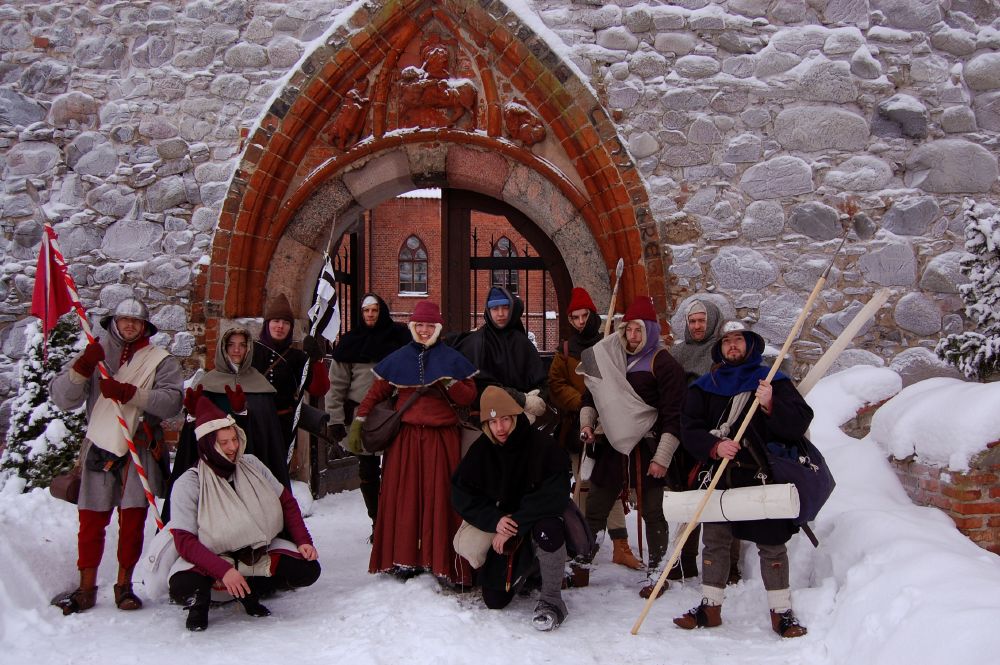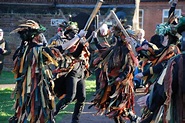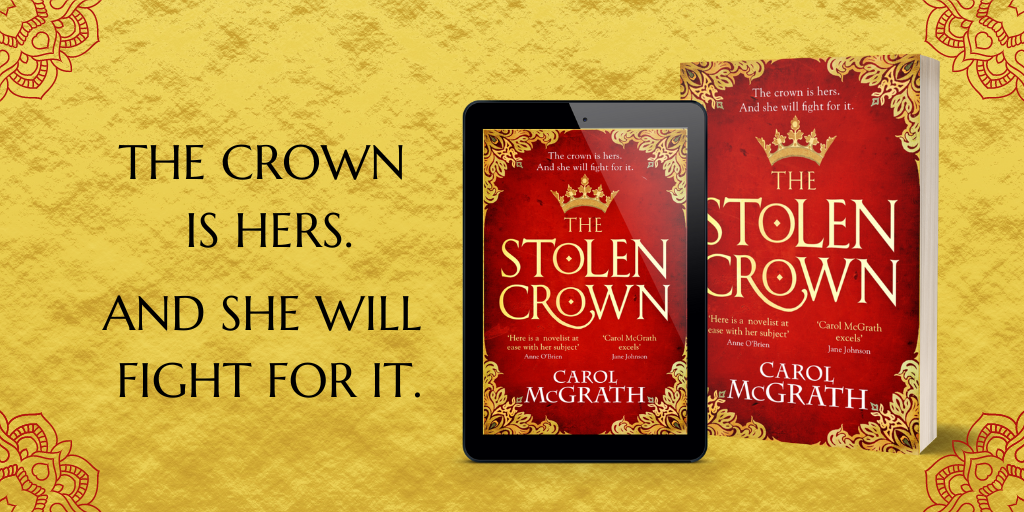The Twelve Days of Christmas.
I’m delighted to welcome Carol McGrath back to my blog with her post on Medieval Christmases.
———————————————————————
Before the Reformation of the 1530s Christmas Eve, the last day of Advent, would have been a day of fasting until after noon on Christmas Eve when fish dishes were served. The real feasting began on Christmas Day. The Yule log was traditionally dragged to the hearth where it burned throughout the twelve days of Christmas. People believed if it went out bad luck could occur during the following year.

They believed that between Christmas and Twelfth night the power of the new-born Christ would outrank that of ghosts and spirits and ensure good luck rather than bad. Medieval people were in general superstitious.
The first day of Christmas was 25th December when everybody attended Church before tucking into a traditional dinner. In London the Worshipful Company of Butchers marched with drummers in a colourful procession to present a boar’s head to the Lord Mayor. This ceremony dates back to 1343. Hospitality was the rule of the season when people visited family and friends and ate and drank as much as they could afford. Christmas Day was a time for feasting, dancing and watching plays and this continued throughout the season until Twelfth Night, the twelfth day of Christmas.

The second day of Christmas, 26th December, was St Stephen’s Day. St Stephen was the patron saint of horses. It was a day for charity when leftovers were given to the poor as almsgiving. Carols were sung. Good King Wenceslas originated in the medieval period but the words we know today are Victorian.
The 27th was another day of feasting with two or three courses served with a lavish selection of dishes. It was the feast of St John the Evangelist and in commemoration of St John who miraculously recovered from drinking poisoned wine, wine was consumed in huge quantities on this day. Wine was a potent delight for poor people who were used to drinking ale throughout the year. Wine was expensive and regarded as a gentleman’s drink. Often children would carry a wassail bowl from house to house with seasonal greetings hoping it would be generously replenished.
The 28th December reflected the Feast of Holy Innocents, the massacre of the innocents by King Herod. It was appropriately called Childermass. In great houses the twelve days of feasting were not presided over by the master of the household but rather by the Lord of Misrule or Master of Merry Disports. He took control of Christmas revelry and his train might include heralds, musicians and fools in fancy dress. They were at their most popular in fourteenth century England and during the early Tudor era. Boy Bishops were appointed in abbeys on 6th December and held office until Holy Innocents Day.

The fifth day of Christmas, 29th December was the anniversary of the martyrdom of Archbishop, Thomas Becket in Canterbury Cathedral. It was marked by a pilgrimage along the Pilgrim’s Way to Canterbury Cathedral when pilgrims would pray for healing and miracles at St Thomas’s Shrine. They might purchase a pilgrim badge. For those not on pilgrimage the season continued to be a season of honest pastimes such as mummers’ plays, pageants, masques and music. Hunting was popular during the season and in 1564 when the Thames froze over people played football and skated on the ice.
The 30th of December was traditionally a day of making music. Most carols are anonymous, their words and music passed down by oral tradition. The first carols in English were translated or composed by Francisian friars in the thirteenth century as aids to learning about the scriptures. The earliest carols by English composers date from the fifteenth century.

The 31st December, the seventh day of Christmas, New Year’s Eve, was a full day of revelry, a day of games and sporting activities. Board games such as chess, backgammon and dice and cards were popular. Huge sums might be lost or won. The Lord of Misrule might organise Hide and Seek and Hood Man Blind.
New Year’s Day marked the liturgical New Year. However the date did not change on documents until 25th March, Lady Day, when the legal New Year began. Lovers exchanged nutmegs glazed with egg whites to spice their drinks. New Year’s Day was called The Feast of Fools. It was a time to reflect on the past year and resolve to do better in the New Year. A knight might make the vow of the peacock by placing his hand on a roasted bird and renew his vow of chivalry.

Picture 5 The 2nd January was a traditional day for mumming. Nativity plays were performed in churchyards, streets or market places, acted by monks or by groups of masked mummers. These were generally spoken in Latin. Cycles of mystery plays became famous. The Coventry Cycle dates from 1392 but there were others such as The Wakefield, York and Chester collections. The word mummers means ‘masked actors’.

Let us jump to the 5th January, Epiphany Eve and twelfth night of Christmas. This was a time of celebration involving feasts, games and more plays. This night marks the culmination of the Yuletide Season. At court there would be a sumptuous banquet and an enormous cake was baked containing dried fruit, flour, honey and spices. Inside the cake was a coin or bean to be offered to guests as they arrived. The lucky recipient would be king or queen of the bean and hoisted shoulder high to chalk crosses on the ceiling beams. The chalk marks were intended to ward off cursed devils, sprites, and other crawling things from conjuring charms.
Finally, Christmas ends. Some thought it bad luck to leave Christmas decorations up after midnight on Twelfth Night. After that the power of the Christ child would no longer hold sway. If greenery was not put outside again the tree spirits might bring disaster to the household during the coming year. When the Yule log was finally allowed to burn out, people would save a piece of it to light the next year’s log. They might keep some of the ashes in the house to protect against fire, lightning and toothache!!!!!
Carol McGrath Author
Following her first degree in Russian Studies, English and History, Carol McGrath completed an MA in Creative Writing at The Seamus Heaney Centre, Belfast, followed by an English MPhil from University of London. She is the author of The Daughters of Hastings Trilogy. Her seventh historical novel, The Stone Rose, published by the Headline Group, set during the High Middle Ages features Isabella of France. Carol also writes Historical Non-Fiction for Pen & Sword. Tudor Sex and Sexuality was published on 30th January 2022. She is currently writing a novel about The Anarchy titled The Stolen Crown to be published May 2023 and is already available on Amazon pre-order.

Visit her website: www.carolcmcgrath.co.uk.
